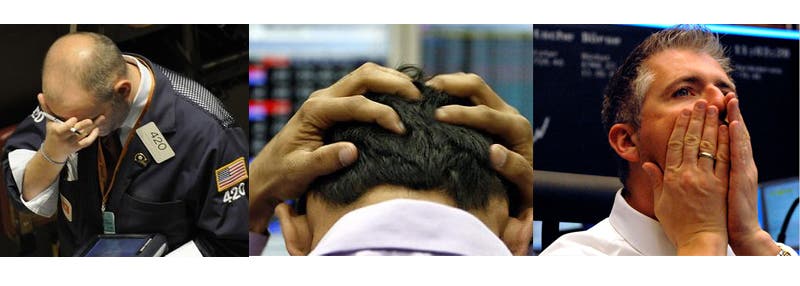It’s not just teenagers who let hormones get the best of them, stock brokers do it all the time, according to a new study. Only, in this case, the consequences might be far worse than a family meltdown: we’re talking about global markets crashes.
The researchers, led by Carlos Cueva from the department of economics at the University of Alicante and Ed Roberts from Imperial College of London, simulated a trading floor with 142 participants, both male and female. The participants were asked to trade dividend-paying stock over 15 rounds of trading. During the whole time, cortisol and testosterone levels were measured.
Cortisol, also known as the “stress hormone”, is released by the adrenal gland in response to stressful physical and psychological situations. Cortisol (along with its partner epinephrine) is best known for its involvement in the “fight-or-flight” response and temporary increase in energy production, at the expense of processes that are not required for immediate survival. Here’s how this basic survival mechanism operates in a typical example:
1. An individual is faced with a stressor.
2. A complex hormonal cascade ensues, and the adrenals secrete cortisol.
3. Cortisol prepares the body for a fight-or-flight response by flooding it with glucose, supplying an immediate energy source to large muscles.
4. Cortisol inhibits insulin production in an attempt to prevent glucose from being stored, favoring its immediate use.
5. Cortisol narrows the arteries while the epinephrine increases heart rate, both of which force blood to pump harder and faster.
6. The individual addresses and resolves the situation.
7. Hormone levels return to normal.
Testosterone is a vital male hormone that is responsible for the development and maintenance of male attributes. It also makes men aggressive and prone to risk taking.
The researchers found that high levels of cortisol corresponded with both higher trading volumes and greater variability in the stock’s price. This was only true for men. For women, this relationship wasn’t as clear.
To see whether or not the cortisol was merely an unrelated correlation or a causation, the researchers investigated the matter further with a new round of experiments. They split the male participants into two groups. In the first, 34 men were given either 100-milligram hydrocortisone pills or placebos. In the second, 41 of them were injected with testosterone or a placebo.
Compared with the placebo group, those who took the hydrocortisone pill invested about 70 percent more money in the high-risk stock. The testosterone test revealed similar results. Cortisol appears to affect risk directly, while testosterone appears to increase optimism about future price changes.
“Numerous reasons have been proposed to explain why financial markets undergo periods of instability. These include: debt accumulation, incorrect beliefs about earnings process, limits to arbitrage, asset incompleteness, herding, or momentum trading,” the authors write Scientific Reports. “Yet influential economists still recognize the key role played by the unpredictability of human motivation.”
“Overall, our work suggests that stability in financial markets might be improved by considering how social, environmental, and procedural factors such as the release of important financial information may impact the hormone levels of traders participating in those markets,” the researchers write, “and therefore could be of benefit to policymakers intent on developing more efficient institutions.”
Journal Reference: Carlos Cueva et al. Cortisol and testosterone increase financial risk taking and may destabilize markets. doi:10.1038/srep11206










